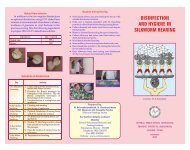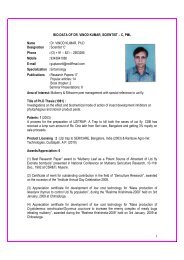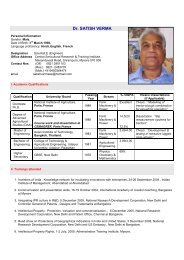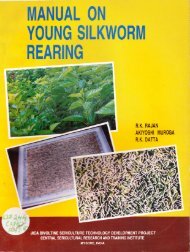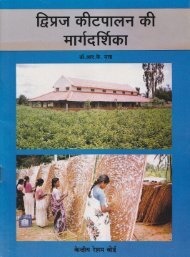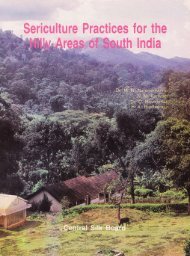Mulberry
Mulberry Cultivation in South India - Central Sericultural Research ...
Mulberry Cultivation in South India - Central Sericultural Research ...
Create successful ePaper yourself
Turn your PDF publications into a flip-book with our unique Google optimized e-Paper software.
VI. QUALITY OF LEAF HARVEST<br />
Flnally, a word about the qualiiy. The aim of mulberry cultivation for silkworm<br />
rearing should be not only increased leaf yields, but also of .quality leaves. Therefore,<br />
the leaves in the field at the time of harvest should be full grown, lush looking and dark<br />
green in colour. Such quality harvests are readily achieved by following the package<br />
of recommendations made in this paper. Paling or yellowing of leaves are symptoms<br />
of deficiencies in plant nutrients or moisture availability, which should be promptly<br />
corrected.<br />
Generally harvest under the row system of cultivation comprises of leaves<br />
growing 0n the primary shoots which are vigorous in growth and thin because of the<br />
close spacing. As a result, the leaves are also comparatively thinner and tend to dry<br />
faster when severed from the plant. This disadvantage is overcome by the method of<br />
twig harvest and twig feeding, or cutting the twings alongwiih leaves into larger bits and<br />
then feeding. Again, since the leaves grow faster on thinnqr branches, they have a<br />
tendency to get over-matured and turn yellow in comparatively shorter period. Further,<br />
during the rainy seasons, they contain comparalively more moisture and therefore, build<br />
up too much humidity in rearing beds, leading to outbreak of diseases, particularly,<br />
Grasserie and Muscardine. Therefore, greater care should be paid to ensure better<br />
ventilation of rearing rooms; harvesting leaves only when they are fully mature; avoiding<br />
overfeeding in rearing beds; satisfactory drying of beds in between feeds and if<br />
necessary to feed the worms with more mature leaves, i.e. with the normal second-age<br />
leaves to first-age larvae, third-age leaves to second-age larvae and so on.<br />
As pointed out earlier, in the case of irrigated mulberry under the pit system, the<br />
leaves are comparatively thicker and heavier, and contain cornparatively less moisture<br />
during rainy seasons. Hence, their feed value in the rearing bed is better and lasts longer.<br />
From the pointof viewof preservingthe quality of leaves, harvest should be made<br />
invariably in the rnorning or evening during the cooler hours of the day. Further, they<br />
should be carried during transit properly covered with wet cloth or gunny, in bags or<br />
baskets. Otherwise, the harvested leaf will suffer in quality due to drying and loss of<br />
moisture, particularly during sum,-ner.<br />
Another important point to be kept in view is that in the case of irrigated gardens,<br />
one proper irrigation should be given invariably, when the worms under rearing pass<br />
the fourth and final moult, so that succulent leaves are available for the last instar<br />
worms.




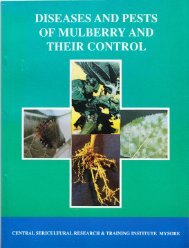

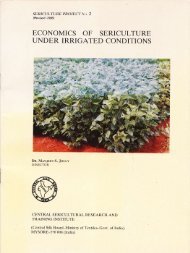
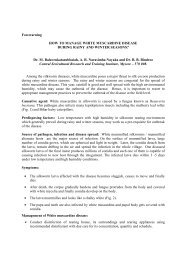
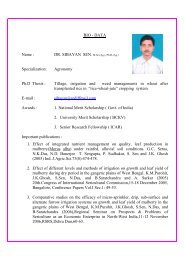
![E}A]\GALORE](https://img.yumpu.com/54052619/1/190x260/eagalore.jpg?quality=85)
